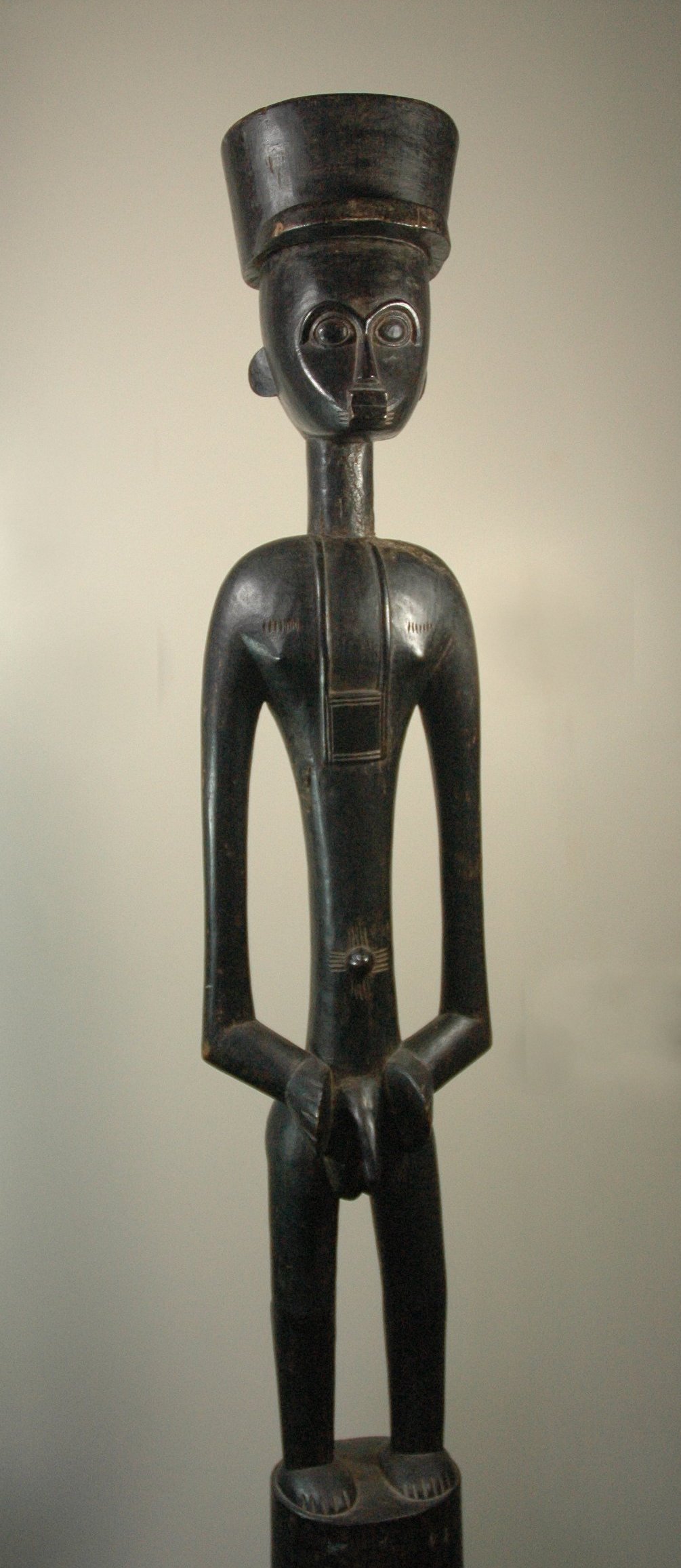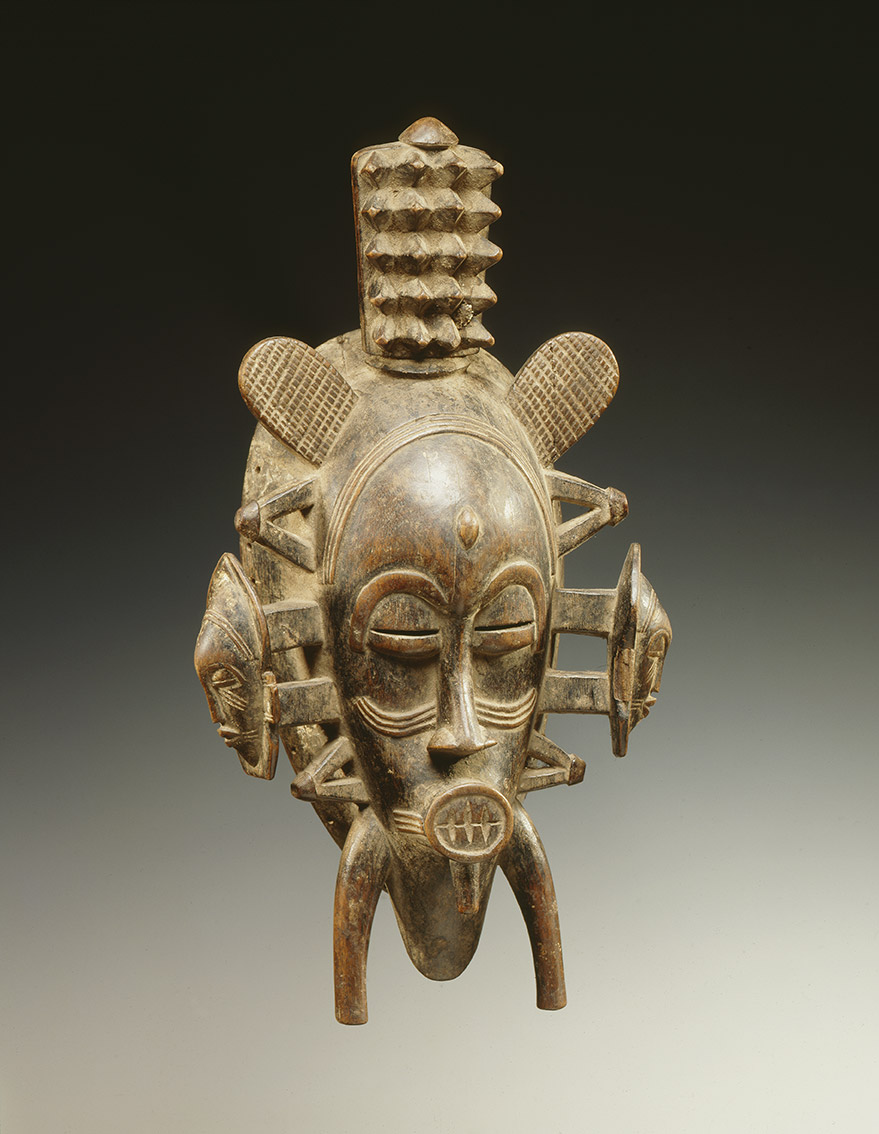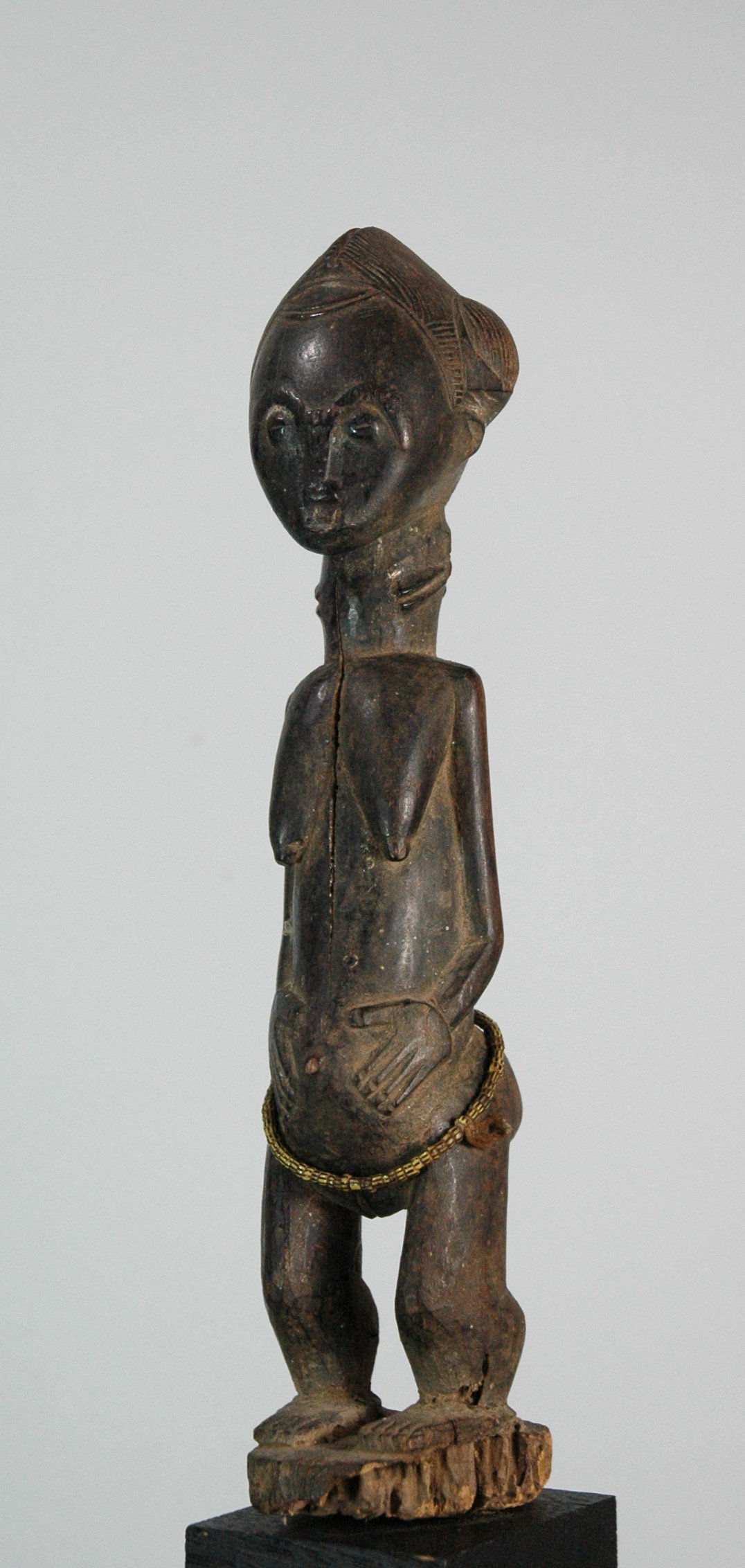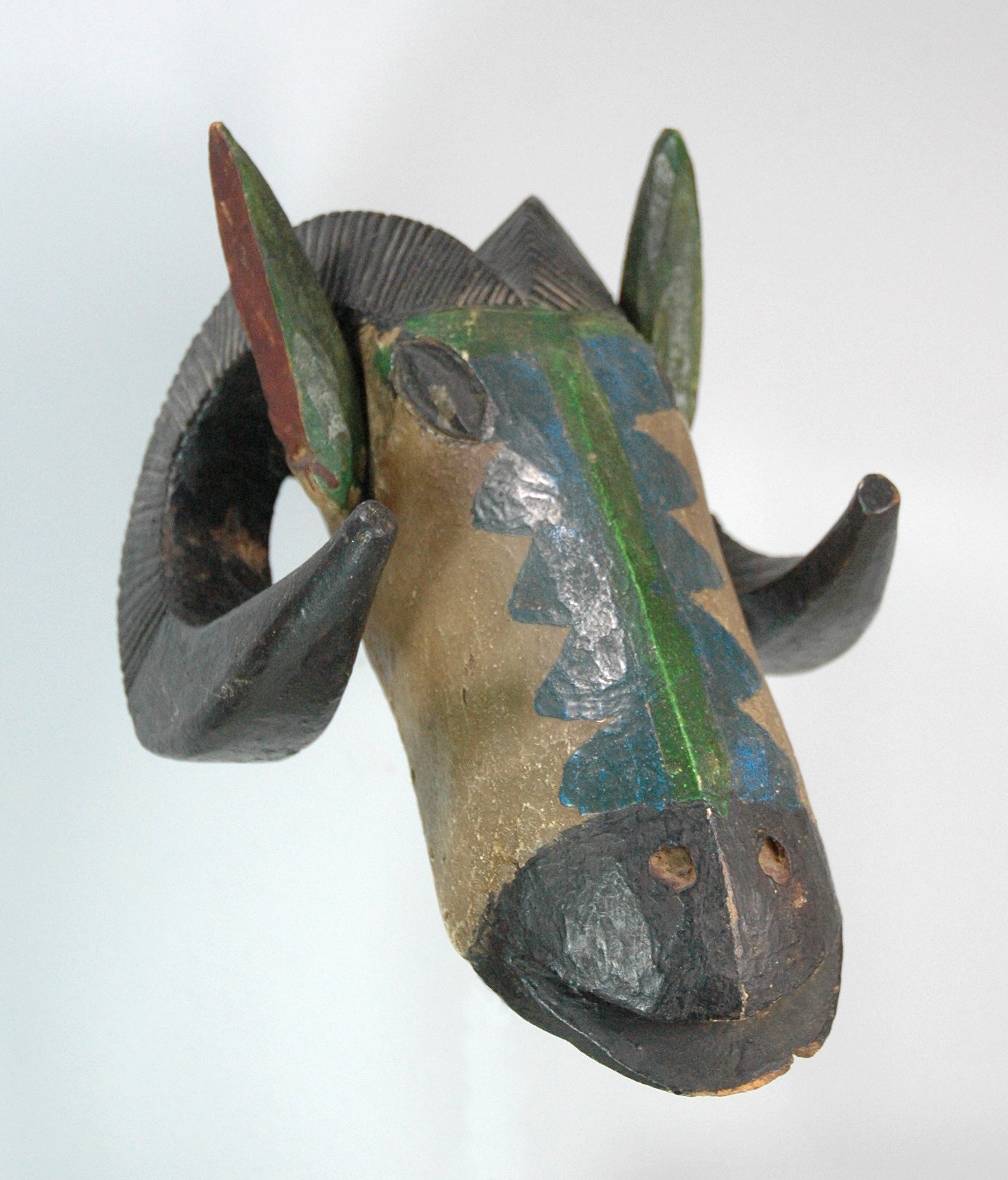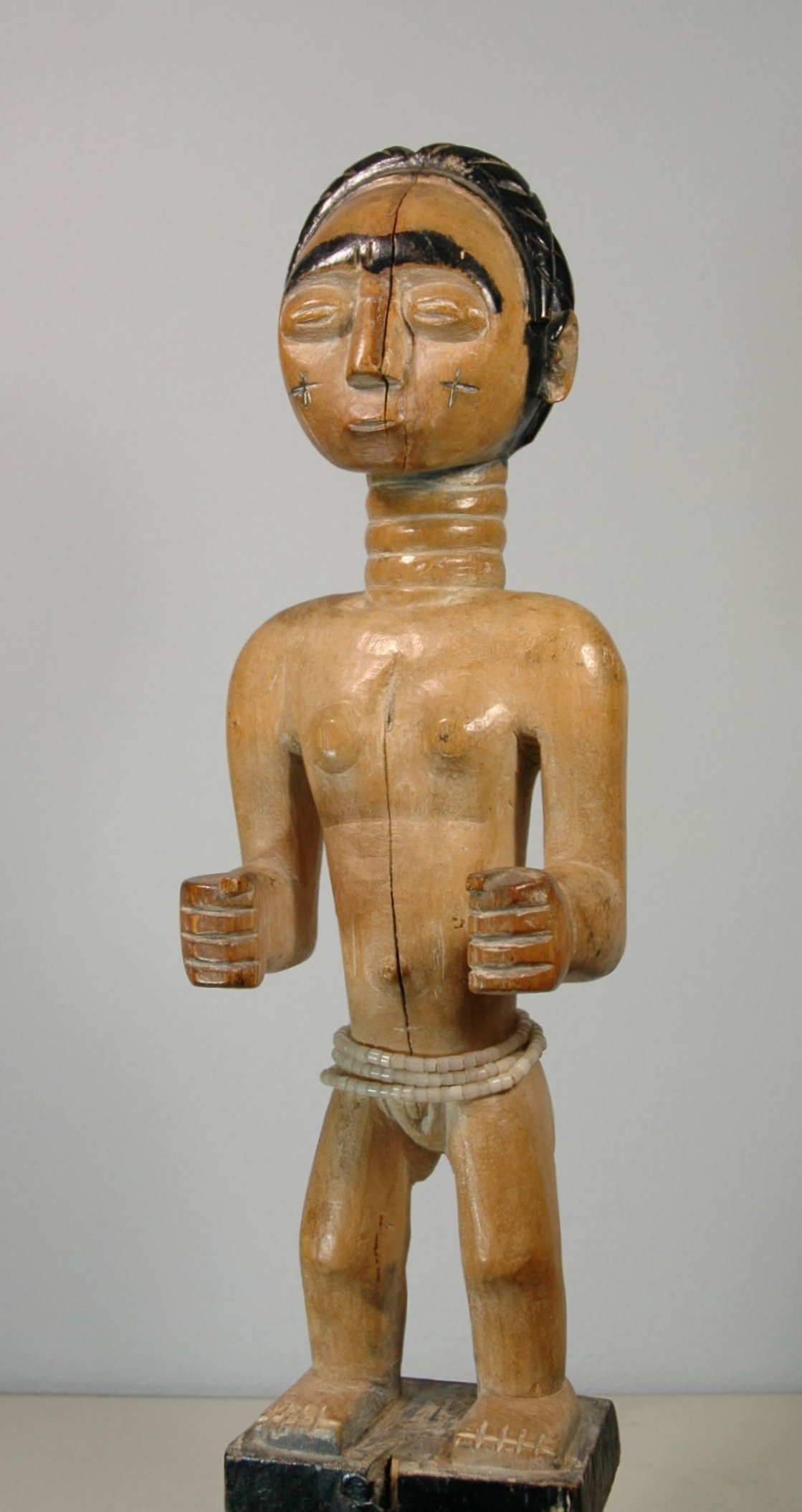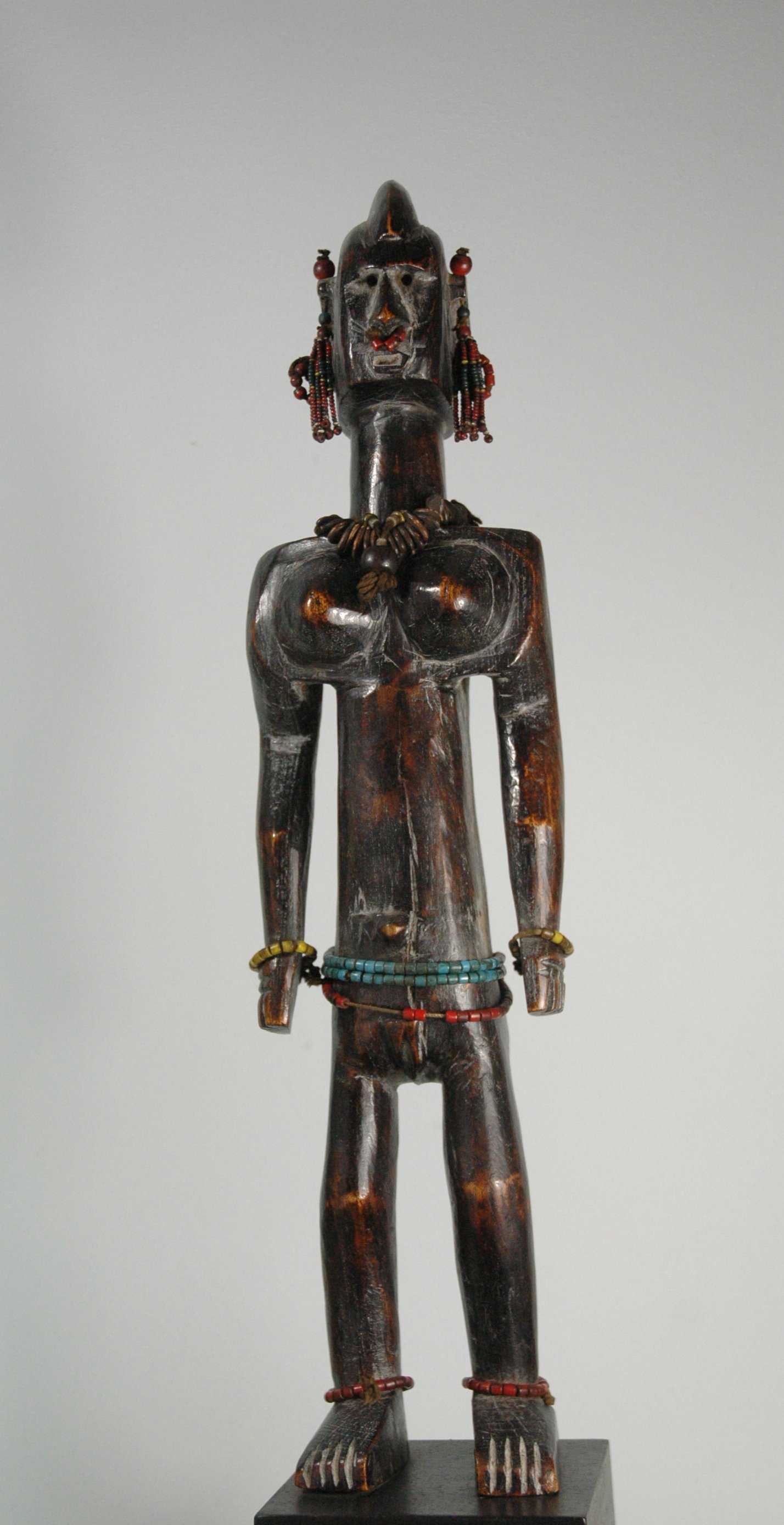Senufo pomdebele figure
Material: dense wood
Height: 105 cm
Country: Burkina Faso, Sikasso
Sculptured probably between 1890 - 1920
These highly stylized sculptures were made by masters in Sikasso, the border ot Burkina Faso and Mali. Figures in this style representthe Pinnacle of Senufo sculpture. All figures by the Master of Sikasssoand his workshop display a cilindrical base underneath slender cylindrical legs, and a tall fin-shaped torso. Wide shoulders expand the sculptures into space and angle down to lithe arms that rest on the hips. All figures show a rectangular amulet suspended from the neck, possibly containing a page of the Qur'an. A hartshaped face with forward-thrusting chin
the figures vnavel is accented. It consists of four sets of four (sometines three) parallel lines that radiate horizontally and vertically out from the navel at its center. Known as 'kunoodyaadye', which translates as 'navel of mother'.It synthesizes references to the Senufo creation myth and the role of women as the matrices of life and the guarantors of social continuity.
On top there is a hat. Their neighbors, the Lobi, also produced figures wearing the same type of hat in the beginning of the 20th century. It is a French officers hat and it is possible that our statue and the Lobi statues, made by famous carvers, refer to colonel Lerousique. He was a very impressive person who realised medical care projects for native people within this region.
Senufo mask
Material: wood
Height: 34 cm
Country Ivory coast, region Korhogo
Master carver Doh Soro
Doh Soro was one of the strongest carvers of the Senufo in the 20th century. Also the name Nambé Siriki circulates. He had a short time of active working. His maternity figures are famous. Different stages of development can be recognized in his work. Masks made later are more complex. The Capok fruit is on top with vertically four rows instaed of three. The application of masks on the side is special but not unique. Related masters such as Ziehouo Coulibaly from Korhogo and Zié Soro from Djemtene also used this form.
The Kpelié can be danced at an event where the birth of twins is getting celebrated, at a harvest festival or on a funeral.
Guro figure
Material: wood
Height: 47 cm
Country: Ivory coast
This statue represents an independent woman or 'manly woman' (ligone). Her long, thick neck designates her as one of the Mwan people, who are related to the Yohure and the Gagu and first occupied the Guro's present domain, though they reside on its northeastern outskirts. Her coiffure is a sign of her status. She has power: she holds an egg in her hand.
Bozo head of the ram 'Saga jigi kun
Material: wood
Length: 32 cm
Country: Mali
Pedigree: coll. Harrie Heinemans, Eindhoven
Published in Heinemans, Harry 'The pleasure of collecting African Art. Africa Museum Berg en Dal, 1986.
Exhibited: Afrika Museum Berg en Dal 21-9 / 30-11-1986
Twice a year, the Bozo, Somono, Marka and Bambara populations of Central West Mali perpetuate a long tradition of sogo (animal) mask dances,
sometimes accompanied by jiri maanin (little wooden people). The purpose of these festivals, called Sogo bo (animal outings) or Tyeko (the thing of men)
or Do bo (the manifestation of the mystery), is to enact original myths, legends, the cosmos and ancestors, as well as all the new things in the world. They
also depict the psychology of the human character.
Fante figure
Material: wood, glass beads
Height: 43 cm
Country: Ghana
Prof. Daniel Mato:
'This is a nice Fante figure. Good quality and condition and due tto its size impressive. The figure shows a surface that indicates some age as there are areas worn down through long handling. The figure has remains of white clay called "hyire" by the Fante indicating its possible use in a shrine where it would have at one time covered wth white clay. White clay would be put on a figure to indicate its spirituality. Remains of the clay can be seen in the creases of the neck and well as between the fingers and also on facial features. Very typical hairstyle worn by women who have had a baby. The markings on the face are not indicators of ethnicity but were used to either cure illness or prevent the spirits from "taking" the baby back if the mother had a number of still birth previously.'
For a simular object (same hand or the same workshop) see the publication of Harry Heinemans 'The pleasure of collecting African art', Museum Berg en Dal 1986 fig. 168.
Bamana twin figure 'flanitokelew'
Material: wood, beads
Height: 49.5 cm
Pedigree: Coll. Irene en Rutger der Kinderen, eersel
Coll. Marcel Nies, Antwerp
Publ.: Heinemans, Harry: The pleasure of collecting African art. Afrika Museum Berg en Dal, 1986 fig. 61.
Among the Bamana, when a twin dies in childhood, a statue is made and given the same name as the deceased. This figure is intended to provide a physical support for the dead twin’s nyama, or “life-force.” Should the second twin die, another sculpture is made and both are cared for by the mother of the children. In some Bamana communities, when a surviving twin marries, an additional sculpture might be created as the companion of the existing flanitokele.
Carved from wood, Bamana twin figures are highly stylized; they are given elongated torsos and their arms are held stiffly at their sides. The statues are sometimes adorned with beads or metal accessories. Although flanitokelew are usually created to reflect the sex of the twin who has passed, they are sometimes given breasts regardless of whether the deceased was male or female. In these cases, the breasts allude to the androgyny with which twins are associated because of their dual nature.
